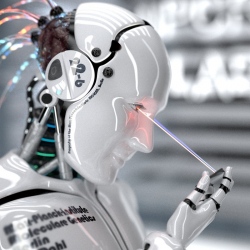
For those of you reluctant to welcome our new robot overlords, it might be time to reconsider your stance.
Six times in the last month I’ve been struck by the increasing utility of robots performing tasks that a human otherwise would. I can’t imagine the number will be going down, either.
The most recent example was Amazon’s $775 million acquisition of Kiva Systems, a company that automates warehouse operations with robots. "Kiva’s technology is another way to improve productivity by bringing the products directly to employees to pick, pack, and stow," said Dave Clark, vice president of global customer fulfillment at Amazon, in a statement. In other words, robots do a lot of the grunt work to make the warehouse run faster.
Amazon knows a lot about operating at large scale, and robots that might not make sense for a small company are a good match for huge warehouses wired directly to a huge e-commerce operation.
And Amazon isn’t alone. A German industrial power called Still has the same idea as it expands beyond mere forklifts into the loftier realm of warehouse logistics. At the CeBIT trade show, it showed off a prototype of an autonomous forklift.
There were robots aplenty at CeBIT, the second in my list of robot epiphanies. The eye candy was a Fraunhofer Institute demonstration of a robot that would take a photo of a person then sketch a portrait based on the digital photo. But there’s plenty of serious work, too, as evidenced by the 4,000 people a year that come through a robotics training center at the CeBIT fairgrounds.
That training center, the Robotation Academy, was established to convince small businesses that robots are worthy investments for manufacturing, in large measure because of higher consistent quality than what humans offer.
